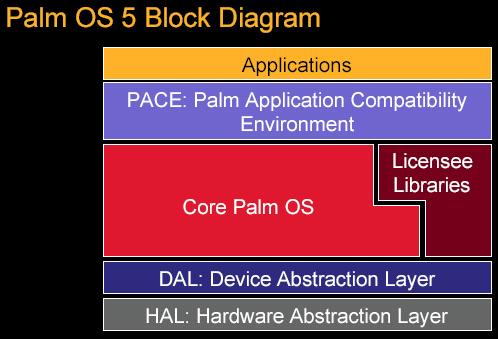Slide 6.2: Palm OS (cont.)
Slide 6.4: Built-in applications for Palm OS
Home

|
Slide 6.2: Palm OS (cont.) Slide 6.4: Built-in applications for Palm OS Home |

|
| Palm apps are run in an emulated environment called the Palm Application Compatibility Environment (PACE). The structure of Palm OS 5 includes five layers: |

|